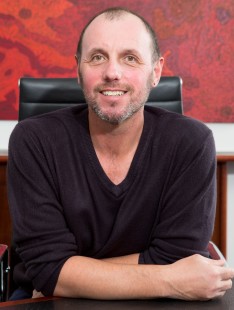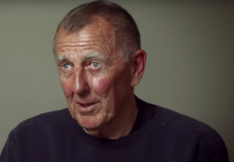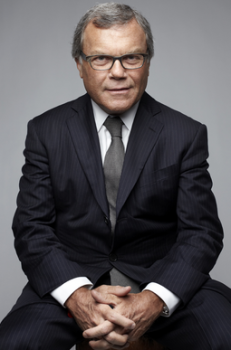Boiling the frog: how Sorrell stalked Singo’s prize for a decade and a half
 STW’s merger with WPP this week has been 17 years in the making. Simon Canning looks at the long road travelled by Australia’s biggest holding company.
STW’s merger with WPP this week has been 17 years in the making. Simon Canning looks at the long road travelled by Australia’s biggest holding company.
Twenty two years after John Singleton floated his eponymous agency and 17 years after WPP joined in an unlikely allegiance, Sir Martin Sorrell has finally done what everyone expected and taken control of the business.
News that WPP has taken a controlling stake in STW Group, the business that began as John Singleton Advertising, will come as a surprise to no one. What has surprised is that it took so long.
Sorrell’s pursuit of STW has been a frog boiling exercise of epic proportions, but followers of adland history will see a theme playing out that mirrors his takeover of GPY&R, the once unassailable George Patterson Bates that finally fell to WPP’s control.
STW has been a survivor in a market that has never looked fondly on marketing and communications businesses as an investment vehicle.
And it began with Singo.
Singleton had forged a string of business successes through the 70s and 80s, with John Singleton Advertising floating on the market in 1993.
The agency continued to grow and by the mid 1990s had reached a point where its 100 per cent Australian client base had hamstrung its growth potential.
Fortuitously, WPP’s global giant Ogilvy & Mather was suffering the reverse issue, fully reliant on international clients and under the guidance of Singleton’s right hand man Russell Tate and Ogilvy’s Geoff Wild (now chairman of WPP Australia and New Zealand). Sorrell and Singleton came together creating Singelton Ogilvy & Mather.
It was an unlikely alliance, Ogilvy founded by David Ogilvy, the mad man who introduced the ethos of brand to the industry, and Singleton, a mad man of another hue known for his brash retail approach to the game.
While the marriage began in self congratulatory adulation, it ended in acrimony, as Singleton sold half of his share in the business in 2005 and the final parcel of 18 million shares in 2007.
Singleton signed off his relationship with Sorrell by telling this reporter in The Australian: “It’s fair to say that WPP have done a very poor job in Australia”.
“When he (Sorrell) gives his word it’s not worth two bob. I think Australia for WPP is a missed opportunity from my point of view.”
At the time WPP’s stake through its Cavendish Square Holdings was just 14.5 per cent, and the company has incrementally increased its share of the business, mainly through dividend reinvestment. The slow pace of it’s growing investment in the company meant it did not trigger a takeover bid when it crossed through 20 per cent.
If speculation had been sporadic that WPP was set to make a move on STW before the Singleton share sale, since then it has become a regular theme of reports on the business, generally coinciding with STW’s full-year and half-year results.
Boiling the frog, Sorrell regularly told reporters that a move on the business would only occur if the time was right while his hold on the STW slowly crept up as the single biggest shareholder.
It’s a tactic he has used to great effect before as he circled and then finally took control of the empire built out of George Patterson Bates, The Communications Group.
Patts had been the property of once giant Cordiant, which WPP took control of in 2003. Cordiant had sold a majority share to private equity company Pacific Equity Partners, which acquired 55 per cent of the company in a fire sale. WPP also emerged with 30 per cent by virtue of its existing stake in Cordiant and sat quietly on the investment until it won a bidding war for the remaining 70 per cent in 2005.
But that deal also ended in acrimoy after WPP took PEP and two key executives to court alleging PEP gave secret payments totalling $1.5 million to George Patterson managing director Anthony Heraghty and creative director James McGrath to guarantee they would remain in place for a year after the sale, thereby artificially inflating the sale price.
The case was finally settled in 2009 with Heraghty and McGrath offering an unreserved apology and WPP winning undisclosed damages.
After the sale WPP merged George Patterson with its existing holding in Y&R and ever since then all eyes have been on what Sorrell planned to do with his holding in STW.
Sorrell has rejected the suggestion he turned up the heat on STW like boiling a frog. But clearly the time had come where WPP and STW were more valuable as one.
The dish is now cooked. The next question, just how do Sorrell and his Australian managers Michael Connaghan and Rob Mactier, intend to serve it up.
Whatever comes next, one suspect’s Sorrell’s slow cooking class is over.
Simon Canning




Not sure Sir S will fall for MC’s “it’s not good enough, we must do better” schtick when asked ‘what’s going on?’
Hey Simon … why don’t you give Singo a bell and see what he has to say about all this ? Whatever he has to say will be worth printing!
@David – you would be correct. There will be a lot more accountability demanded of STW Management, when they have to answer to WPP, than to half yearly shareholder meetings of investment banking and superfund representatives.